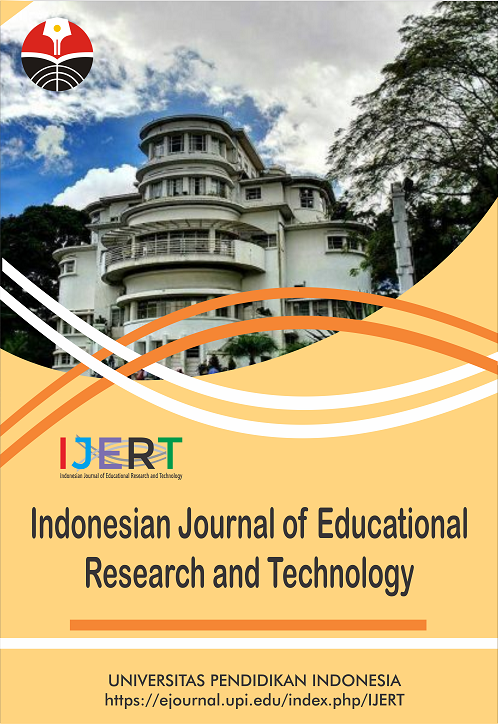The Use of Virtual Reality as A Substitute for The Pre-School Students’ Field Trip Activity During the Learning from Home Period
Abstract
Keywords
Full Text:
PDFReferences
Berki, B. (2020). Experiencing the sense of presence within an educational desktop virtual reality. Acta Polytechnica Hungarica, 17(2), 255-265.
Bursztyn, N., Walker, A., Shelton, B., and Pederson, J. (2017). Increasing undergraduate interest to learn geoscience with GPS-based augmented reality field trips on students’ own smartphones. GSA Today, 27(5), 4-11.
Chao, K. H., Lan, C. H., Chang, K. E., and Sung, Y. T. (2014). Implementation of a mobile peer assessment system with augmented reality in a fundamental design course. Knowledge Management and E-Learning: An International Journal, 6(2), 123-139.
Domingo, J. R., and Bradley, E. G. (2018). Education student perceptions of virtual reality as a learning tool. Journal of Educational Technology Systems, 46(3), 329-342.
Hu-Au, E., and Lee, J. J. (2017). Virtual reality in education: a tool for learning in the experience age. International Journal of Innovation in Education, 4(4), 215-226.
Liou, H. H., Yang, S. J., Chen, S. Y., and Tarng, W. (2017). The influences of the 2D image-based augmented reality and virtual reality on student learning. Journal of Educational Technology and Society, 20(3), 110-121.
Papanastasiou, G., Drigas, A., Skianis, C., Lytras, M., and Papanastasiou, E. (2019). Virtual and augmented reality effects on K-12, higher and tertiary education students’ twenty-first century skills. Virtual Reality, 23(4), 425-436.
Petersen, G. B., Klingenberg, S., Mayer, R. E., and Makransky, G. (2020). The virtual field trip: Investigating how to optimize immersive virtual learning in climate change education. British Journal of Educational Technology, 51(6), 2099-2115.
Pham, H. C., Dao, N., Pedro, A., Le, Q. T., Hussain, R., Cho, S., and Park, C. S. I. K. (2018). Virtual field trip for mobile construction safety education using 360-degree panoramic virtual reality. International Journal of Engineering Education, 34(4), 1174-1191.
DOI: https://doi.org/10.17509/ijert.v1i2.33410
Refbacks
- There are currently no refbacks.
Copyright (c) 1970 Universitas Pendidikan Indonesia

This work is licensed under a Creative Commons Attribution-ShareAlike 4.0 International License.







.png)




